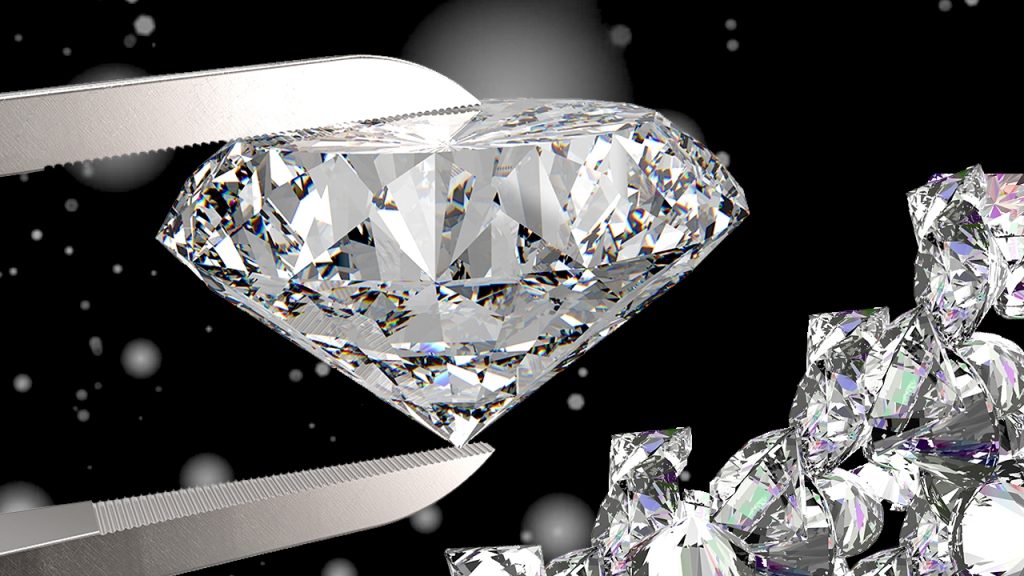The Fascinating Process of Making a Diamond.
How do Diamond Making Process get to the finished product that you see in jewellery stores? A few thousand years ago, no one had ever seen a diamond, and scientists didn’t know what they were until they were discovered in India.
The process of making diamonds—whether natural or synthetic—is quite fascinating, and it’s relatively easier than you might think! This Diamond Making Process explains the process of making diamonds and talks about the different methods used to make them, so if you’re interested in learning more about this process, keep reading!

Introduction To Diamond Making.
Diamond Making Process are one of nature’s most beautiful treasures, but how do they get created? As it turns out, diamond creation is an extremely complex process. Diamonds are made from only two things: carbon and heat.
To create these rare gems, all you need to do is heat coal in the presence of an enormous amount of pressure for an extended period. When subjected to extreme temperatures and pressures, coal will metamorphose into Diamond Making Process over time—with great effort and patience.
This exciting diamond-making process requires incredible precision and accuracy; if even one variable changes during production, your precious stones may not be as valuable as they should be.
Step 1 – Mining
The first step in the Diamond Making Process making is mining. Diamonds are formed over an estimated 200 million years, deep under large tectonic plates, and brought to the surface via volcanic activity.
Gem quality Diamond Making Process found today are usually those that were carried to or near Earth’s surface by rivers or streams during ancient times, where they can be found in river gravel or on beaches and shorelines.
To mine for Diamond Making Process, people must excavate tons of earth—just as they have been doing since prehistoric times.
Step 2 – Crushing & Grinding
Diamond Making Process are made from pure carbon and are, thus, much softer than other gems like ruby or sapphire. As such, they must be cut with extreme precision to reflect their full beauty.
Before that happens, though, they first must undergo an industrial process called Diamond Making Process grinding. Because diamonds aren’t naturally very shiny they’re quite dull—they must go through some sort of polishing to bring out their gleam and brilliance.
As with anything that has been ground down into smaller pieces, Diamond Making Process grit tends to fly everywhere when it is being ground down by an industrial grinder: That is why most polishers will wear eye protection as well as clothing over any exposed skin parts such as arms or hands.
Step 3 – Polishing
There are many different types of Diamond Making Process polishing— Diamond Making Process tables, laser polishing and others. This is partly due to market demand.
How much shine do you want? The ideal shape? What material will you be placing Diamond Making Process into gold, silver or platinum jewellery? A jeweller can typically tell you what kind of polishing is best for your project.
Once your diamond is polished, it’s ready to be set in a ring or other piece of jewellery. No matter how it’s done, each step in production adds value and quality to your Diamond Making Process.
This is exactly why it pays to buy diamonds directly from a gemstone dealer like GemSelect rather than trying to save some money by buying cheaper loose stones.
Step 4 – Sorting, Identification And Packaging
A Diamond in Its Natural State (Part I) A diamond is just a piece of compressed coal dust. This seems to be one of those phrases that get passed around a lot.
After all, there’s nothing magical about diamonds. It’s just something people made up to make them more desirable. To understand how diamonds are made, you must first realize that they come from deep within our planet.
While most experts believe they crystallize within 200 miles below the earth’s surface, it could be much closer than that—we just can’t get there with current technology.
Step 5 – Selling
diamonds are marketed using different tactics in different markets. For example, blue diamonds (which are not blue but have an unusual tint that gives them their name) sell at a higher price than white diamonds, and so they are sold to discerning customers. Similarly, fancy colour diamonds may be used to create unique pieces of jewellery such as ruby diamond rings or sapphire Diamond Scanning Blog.
Most diamonds are graded by four characteristics: colour, clarity, cut and carat. The more imperfections a diamond has—the more it scores poorly on clarity—the less it will cost. However, there is nothing wrong with buying one that isn’t clear because flaws can sometimes add value to stones and make them rare.
